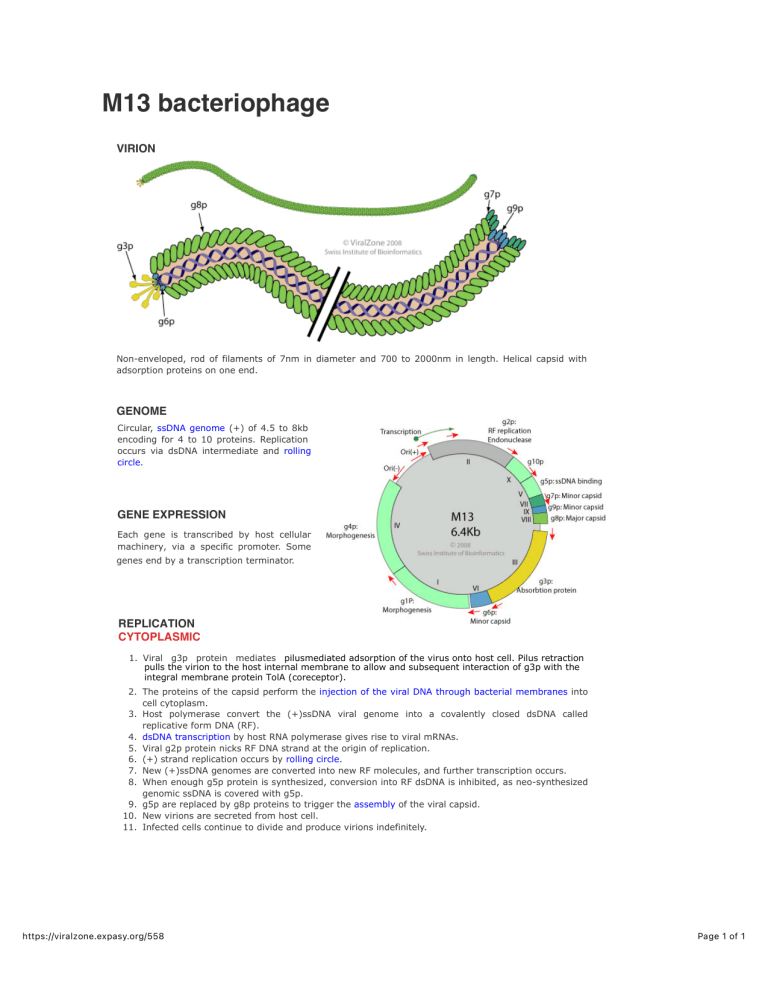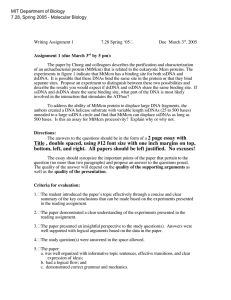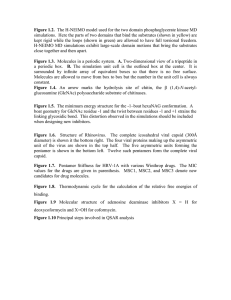
M13 bacteriophage VIRION g7 q9p 0 93p 96p 5500002.00 0000 00 0-n Non-enveloped, rod of filaments of 7nm in diameter and 700 to 2000nm in length. Helical capsid with adsorption proteins on one end. GENOME Circular, ssDNA genome (+) of 4.5 to 8kb encoding for 4 to 10 proteins. Replication occurs via dsDNA intermediate and rolling circle. q2p: Freplication Transcupton Endonuclease Orif+) g10p 95p:5sDNAbinding 117p:Minorcapsid GENE EXPRESSION q9p:Minorcapsid g8p:Majorcapsid M13 6.4Kb Each gene is transcribed by host cellularMorphogenesis 94p: machinery, via a specific promoter. Some ©2008 SwissInchittitoniRininformatice genes end by a transcription terminator. g3p: Absorbtionprotein g1P: Morphogenesis REPLICATION CYTOPLASMIC gbp: Minorcapsid 1. Viral g3p protein mediates pilusmediated adsorption of the virus onto host cell. Pilus retraction pulls the virion to the host internal membrane to allow and subsequent interaction of g3p with the integral membrane protein TolA (coreceptor). 2. The proteins of the capsid perform the injection of the viral DNA through bacterial membranes into cell cytoplasm. 3. Host polymerase convert the (+)ssDNA viral genome into a covalently closed dsDNA called replicative form DNA (RF). 4. dsDNA transcription by host RNA polymerase gives rise to viral mRNAs. 5. Viral g2p protein nicks RF DNA strand at the origin of replication. 6. (+) strand replication occurs by rolling circle. 7. New (+)ssDNA genomes are converted into new RF molecules, and further transcription occurs. 8. When enough g5p protein is synthesized, conversion into RF dsDNA is inhibited, as neo-synthesized genomic ssDNA is covered with g5p. 9. g5p are replaced by g8p proteins to trigger the assembly of the viral capsid. 10. New virions are secreted from host cell. 11. Infected cells continue to divide and produce virions indefinitely. https://viralzone.expasy.org/558 Page 1 of 1


